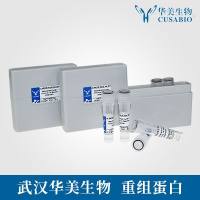Extraction of Chromatin
互联网
Dr. William H. Heidcamp, Biology Department, Gustavus Adolphus College
Exercise 10.3 - Extraction of Chromatin
LEVEL II
Materials
-
Bovine or porcine brain
-
0.25 M Sucrose containing 0.0033 M calcium acetate
-
2.0 M Sucrose with 0.0033 M calcium acetate
-
0.075 M NaCl with 0.024 M EDTA, pH 8.0
-
Tris-HCl buffer, pH 8.0 with the following molarities
-
0.05 M, 0.002 M, 0.0004 M
-
TCA (Trichloroacetic acid)
-
Tissue homogenizer
-
Cheesecloth
-
Refrigerated preparative centrifuge
-
Bradford or Lowry protein assay
- UV spectrophotometer (Optional)
Procedure 3
-
Homogenize approximately 30 gms of bovine or porcine cerebellar tissue in a teflon-glass homogenizer in 9 volumes of cold 0.25 M sucrose containing 0.0033 M Calcium Acetate.
-
Filter the resulting brei through several layers of cheesecloth and obtain crude nuclear pellets by centrifuging at 3,500 xg for 20 minutes.
-
Resuspend the nuclear pellet in 80 ml of cold 0.25 Sucrose containing 0.0033 M Calcium Acetate. 4
-
Obtain three cellulose nitrate centrifuge tubes and place 25 ml. aliquots of the resuspended nuclear pellet in each. Carefully pipette 5.0 ml of 2.0 M Sucrose-0.0033 M Calcium Acetate into the bottom of each tube. Insert a pipette with the 2.0 M sucrose through the suspended nuclei and allow the viscous sucrose to layer on the bottom of the tube. Centrifuge the tubes at 40,000 xg for 60 minutes.
-
Using the resulting nuclear pellet is just above the dense sucrose layer. It is used to extract chromatin proteins. Carefully remove the supernatant above the pellet with a pipet. Then, insert the pipet through the nuclear layer and remove the bottom sucrose layer. The nuclear pellet will remain in the tube. Resuspend the pellet in 40 ml of 0.075 M NaCl-0.024 M EDTA, pH 8.0 and centrifuge at 7700 xg for 15 minutes.
-
Remove and discard the supernatant, resuspend the pellet once again in 40 ml of 0.075 M NaCl-0.024 M EDTA, pH 8.0 and centrifuge again at 7700 xg for 15 minutes. Repeat this process one more time.
-
Resuspend the nuclear pellet in 40 ml of 0.05 M Tris-HCl, pH 8.0 and centrifuge at 7,700 xg for 10 minutes.
-
Repeat step 7 to thoroughly wash the nuclei and then wash 2x each in 0.01 M Tris pH 8.0, 0.002 M Tris pH 8.0 and 0.0004 M Tris pH 8.0.
-
Resuspend the final washed nuclear pellet in ice cold distilled water to a final volume of 100 ml and allow to swell overnight at 4° C. Gently stir the mixture on the following day. This solution is the pure chromatin to be used for subsequent analysis.
-
Determine the purity of the chromatin sample within the nuclear pellet using one of the following:
-
Determine the protein concentration by Lowry or Bradford procedure.
-
Measure the optical absorbance at 230 nm (UV). The absorbance of a 1 mg/ml concentration of pea bud histone at 230 nm equals 3.5. OD units. The absorbance follows the Beer-Lambert law, and is linear with histone concentration. Since it is merely an optical reading, the sample is not destroyed in the measurement.
-
Measure the turbidity of the solution. Add trichloroacetic acid to a final concentration of 1.1 M and wait exactly 15 minutes. Read the OD


 . A 10 ug/ml solution of pea bud histone has an OD = 0.083 at 400 nm. This technique is excellent for readings between 0 and 0.15 OD. The TCA precipitates some proteins and thus this procedure is more specific to histones than B. It can also be performed without a UV spectrophotometer.
. A 10 ug/ml solution of pea bud histone has an OD = 0.083 at 400 nm. This technique is excellent for readings between 0 and 0.15 OD. The TCA precipitates some proteins and thus this procedure is more specific to histones than B. It can also be performed without a UV spectrophotometer.
- Measure by non-destructive fluorometry. Histones can be detected by an excitation wavelength of 280 nm and a fluorescence measurement at 308 nm. Non-histones can be detected in the same sample by excitation at 290 nm and measurement at 345 nm. Of course, this procedure requires the use of a fluorescence spectrophotometer.
-
Determine the protein concentration by Lowry or Bradford procedure.
Notes
The extraction of chromatin proteins starts with the isolation of a good nuclear fraction. Nuclear pellets and chromatin should be extracted one day before the laboratory period. If DNA, RNA, and both Histone and Non-Histone proteins are to be separated, begin the procedure approximately three working days prior to lab.







